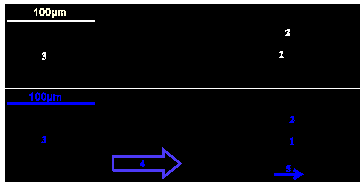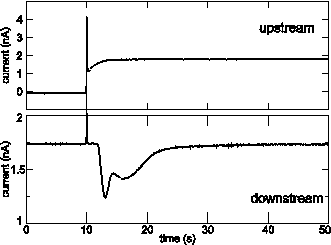Sensing
chaired by Jeroen Cornelissen/Serge Lemay
Program
14.15-14.30 | Detection of protein aggregates and what we can learn from this about the process of neurodegeneration Kerensa Broersen (NBP) |
14.35-14.50 | Functionalized PLL as a new strategy for surface modification and biosensing Jacopo Movilli (MNF) |
14.55-15.10 | Potential-controlled adsorption and separation of redox species in nanofluidic devices Jin Z. Cui (NI) |
15.15-15.30 | Fully integrated mass flow, pressure, density and viscosity sensor for both liquids and gases Dennis Alveringh (MSS) |
Abstracts
Detection of protein aggregates and what we can learn from this about the process of neurodegeneration, Kerensa Broersen (NBP)
tba
Functionalized PLL as a new strategy for surface modification and biosensing, Jacopo Movilli (MNF)
Designing a biosensor requires several requirements to be taken into account. Its application, the specific analyte, and the desired physical signal determine the materials and molecules that constitute the bioreceptor and the transducer to perform a proper device. In particular, the receptor and the transducer work synergistically to form a so-called “functional biointerface”, where the recognition event takes place and is translated into a measurable signal. The functional biointerface is the biosensor’s core, affecting its sensitivity, selectivity and efficiency. Thus, controlling the physical and chemical properties of the biointerface will determine the performance of the whole sensing device. Thiol-based monolayers, EDC/NHS coupling chemistry, and silane-based chemistry are well known procedures to immobilize biomolecules on surfaces, but drawbacks exist in chemical instability, materials specificity, and others. Here, we present a new, quick method for surface modification based on functionalized poly-L-lysine (PLL). Due to its electrostatic interaction and the possibility of its easy functionalization with a large variety of functional groups, modified PLLs provide an interesting approach to develop biosensors, because the properties of the surface (such as the type of functional group, antifouling behavior and probe density) can be tuned at will. Here we will show the functionalization and successful detection of DNA with PLL-modified substrates.
Potential-controlled adsorption and separation of redox species in nanofluidic devices, Jin Z. Cui (NI)
High sensitivity to even weak degree of surface interaction is a hallmark of nanofluidic devices due to their extremely high surface-to-volume ratios. Here we exploit potential-dependent reversible adsorption of redox molecules to distinguish between species based on their time of flight through a nanochannel under steady-state fluid flow conditions. Nanogap electrodes embedded in the nanochannel floor and ceiling are employed to modulate the analyte concentration in an upstream transducer. The modulated concentration profile then propagates to a second, downstream nanogap transducer with a species-dependent velocity, where it is detected amperometrically as a redox cycling current. The experimental configuration is illustrated in Figure 1, while an example of a signal showing separated amperometric peaks for two species is shown in Figure 2.

Figure 1. (A) Optical images of a device before etching of the nanochannel (top) and an etched device interfaced to a PDMS microchannel (bottom). The complete devices consist of two nanogap transducers (1 & 2), a nanochannel used for separation (3), a microfluidic inlet (4, flow direction shown by the blue arrow) and a microchannel (5) in parallel with the nanochannel.

Figure 2. Current versus time for the upstream (top) and downstream (bottom) nanogap electrodes. Redox cycling mode is switched from ‘off’ to ‘on’ at t = 10s in the upstream transducer, generating a volume of solution with a lower analyte concentration. This is detected a few seconds later at the downstream transducer. Here the two peaks correspond to the species 1,1’-Ferrocenedimethanol (Fc(MeOH)2) and (Ferrocenylmethyl)trimethylammonium (FcTMA+).
Fully integrated mass flow, pressure, density and viscosity sensor for both liquids and gases, Dennis Alveringh (MSS)
We report on a microfluidic multi parameter sensor consisting of two inline pressure sensors completely integrated with a Coriolis mass flow sensor on a single chip. The Coriolis mass flow sensor is able to measure true mass flow and density, the pressure sensors can measure the pressure drop over the Coriolis mass flow sensor. The true mass flow combined with the pressure drop enables the measurement of viscosity for both liquids and gases. Besides, compensation for non-ideal effects for each individual sensor is possible using the output of the other sensors. Fabrication of the device is based on surface channel technology. The device has been characterized with isopropanol in water solutions and shows good correspondence to density and viscosity values from literature.
